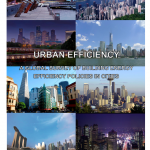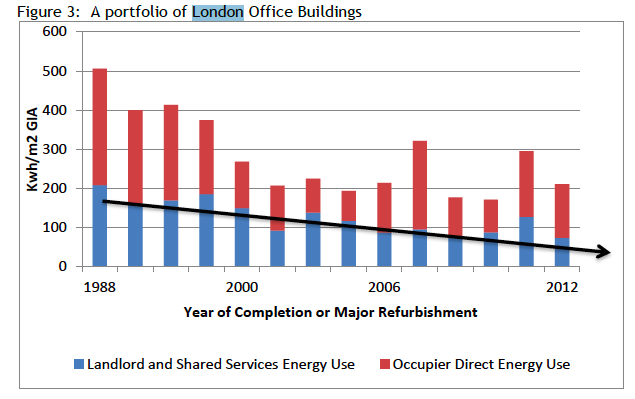Site search:
-
What’s new?
Energy for London Tags
Brent Buildings Camden Carbon Emissions CHP Cities Climate Adaptation Community Heating Community Initiatives Croydon Data DECC Decentralised Energy Distribution ECO Energy Costs Energy Efficiency Enfield FIT Fuel Poverty Funding Green Deal Hackney Haringey Housing Islington Lambeth Library Local Authorities Mayor Newham Ofgem Olympics Photovoltaics Planning RE:FIT RE:NEW Renewable Energy Retrofit Southwark Tower Hamlets Transport Waltham Forest Waste WestminsterEnergy Archives:
- February 2021 (1)
- January 2021 (15)
- December 2020 (15)
- November 2020 (9)
- October 2020 (3)
- August 2020 (5)
- July 2020 (3)
- June 2020 (4)
- April 2020 (10)
- March 2020 (5)
- February 2020 (2)
- January 2020 (3)
- October 2019 (1)
- September 2019 (4)
- August 2019 (2)
- July 2019 (1)
- August 2018 (1)
- November 2016 (8)
- October 2016 (8)
- September 2016 (2)
- August 2016 (8)
- July 2016 (14)
- April 2016 (12)
- March 2016 (16)
- February 2016 (8)
- January 2016 (4)
- December 2015 (1)
- November 2015 (1)
- October 2015 (16)
- September 2015 (3)
- June 2015 (1)
- May 2015 (1)
- April 2015 (1)
- March 2015 (1)
- February 2015 (1)
- January 2015 (1)
- December 2014 (18)
- November 2014 (4)
- August 2014 (8)
- July 2014 (7)
- June 2014 (25)
- May 2014 (8)
- April 2014 (4)
- March 2014 (12)
- February 2014 (7)
- January 2014 (13)
- December 2013 (11)
- November 2013 (15)
- October 2013 (15)
- September 2013 (18)
- August 2013 (5)
- July 2013 (20)
- June 2013 (33)
- May 2013 (8)
- April 2013 (16)
- March 2013 (25)
- February 2013 (14)
- January 2013 (20)
- December 2012 (23)
- November 2012 (23)
- October 2012 (25)
- September 2012 (14)
- July 2012 (12)
- June 2012 (43)
- May 2012 (20)
- April 2012 (8)
- March 2012 (40)
- February 2012 (39)
- January 2012 (40)
- December 2011 (22)
- November 2011 (40)
- October 2011 (33)
- September 2011 (48)
- August 2011 (40)
- July 2011 (58)
- June 2011 (41)
- May 2011 (80)
- April 2011 (38)
- March 2011 (33)
- February 2011 (25)
- January 2011 (24)
- December 2010 (3)
- November 2010 (7)
- October 2010 (6)
- September 2010 (7)
- August 2010 (1)
- July 2010 (2)
- June 2010 (4)
- May 2010 (1)
- March 2010 (3)
- February 2010 (3)
- December 2009 (5)
- November 2009 (2)
- October 2009 (3)
- July 2009 (3)
- June 2009 (1)
- April 2009 (1)
- March 2009 (1)
- February 2009 (1)
- January 2009 (1)
- December 2008 (2)
- October 2008 (1)
- September 2008 (1)
- July 2008 (1)
- March 2008 (2)
- January 2008 (2)
- October 2007 (1)
- September 2007 (3)
- July 2007 (1)
- March 2007 (1)
- February 2007 (3)
- November 2006 (3)
- August 2006 (1)
- February 2006 (1)
- May 2005 (1)
- February 2004 (1)
Tag Archives: Buildings
The Role of Energy Efficient Buildings
15 October 2015: New study by those excellent boffins at Ecofys for European insulation trade body Eurima which highlights that “Beyond the main benefits of energy efficiency, such as reduced energy costs and greenhouse gas emissions, energy efficiency in buildings also has the potential to reduce costs and increase efficiency on the supply side. “
Why would that be the case? It’s due to the amount of heating that is anticipated to shift from gas to electricity (boilers to heat pumps) over the coming decades:
A Global Survey of Building Energy Efficiency Policies in Cities
 December 2014: A pretty major study undertaken for the C40 Cities network – ‘Urban Efficiency: A Global Survey of Building Energy EfficiencyPolicies in Cities’ – which was sponsored by Tokyo Metropolitan Government. The report is available to download here.
December 2014: A pretty major study undertaken for the C40 Cities network – ‘Urban Efficiency: A Global Survey of Building Energy EfficiencyPolicies in Cities’ – which was sponsored by Tokyo Metropolitan Government. The report is available to download here.
The report’s objectives in terms of building energy efficiency programmes were to:
- capture the range of different policies being implemented in cities around the world;
- obtain detailed information on the necessary conditions, opportunities and potential challenges when introducing and implementing such initiatives; and
- analyse what approaches have been successful in which context and why.
The policies it highlights as being most commonly implemented across cities across the world include:
- Building Energy Codes
- Reporting and benchmarking of energy performance data
- Mandatory auditing and retro-commissioning
- Emissions trading schemes
- Green building rating and energy performance labelling
- Financial incentives
- Non-financial incentives
- Awareness raising programmes
- Promoting green leases
- Voluntary leadership programmes
- Government leadership
A chapter – ‘Experiences from Frontrunner Cities’ – presents detailed case studies from “ten pioneering C40 cities implementing various kinds of programmes to drive energy efficiency and sustainability in existing commercial and residential buildings” – but doesn’t unfortunately include experiences from London. London is however included in a ‘policy map’ survey for new and existing buildings (pages 19-21).
Page 34 mentions “Almost all cities have shown a willingness to lead by example. In London, all new buildings for the Greater London Authority are required to meet the London Development Agency’s Sustainable Design and Construction Standards or exceed targets in the London Plan.” Some information on the application of the LDA’s SDC Standards can be seen from a MQ from earlier this year here.
Elsewhere in the report, London’s Better Building Partnership initiative is referenced. Pages 40 and 41 also provide a useful list of weblinks to London documents on energy efficiency initiatives.
A field study of urban microclimates in London
December 2014: Open access paper published in the January 2015 issue of Renewable Energy.
“This paper aims to address the characteristics of urban microclimates that affect the building energy performance and implementation of the renewable energy technologies. An experimental campaign was designed to investigate the microclimate parameters including air and surface temperature, direct and diffuse solar irradiation levels on both horizontal and vertical surfaces, wind speed and direction in a dense urban area in London. The outcomes of this research reveal that the climatic parameters are significantly influenced by the attributes of urban textures, which highlight the need for both providing the microclimatic information and using them in buildings design stages. This research provides a valuable set of microclimatic information for a dense urban area in London. According to the outcomes of this research, the feasibility study for implementation of renewable energy technologies and the thermal/energy performance assessment of buildings need to be conducted using the microclimatic information rather than the meteorological weather data mostly collected from non-urban environments.”
Available to download here.
Microclimatic effects of green and cool roofs in London
December 2014: Paper presented in the latest issue of academic journal Energy in Buildings – Microclimatic effects of green and cool roofs in London and their impacts on energy use for a typical office building – which presents the results from a modelling study that assessed the effectiveness of retrofitted green and cool roofs at reducing energy use for a typical office in Central London. These technologies were compared to application of retrofitting traditional insulation.
The building modelling results indicate that in the current climate, green roofs reduce annual energy use within the building. The level of savings are reduced when green roofs are dry in the summer. Cool roofs are more effective in the summer, but result in an annual energy penalty due to their performance in winter. In a 2050 climate scenario, both green and cool roofs result in a reduction in annual energy use. The application of traditional insulation is the most effective technology at reducing annual energy use. Adding insulation and a green or cool roof reduces the relative effectiveness of the roofs.
Unfortunately – the paper is not available for free..
Energy & Climate Questions to the Mayor
December 2014: This month the Mayor has been asked questions in relation to:
alternative energy for maritime facilities; the Mayor’s Energy Advisor’s letter to the Treasury to support tax incentives to help community energy projects; the Belvedere Energy from Waste plant and the Viridor Energy Recovery plant in Beddington, Sutton; the Mayor’s Energy Advisor’s visit to Shanghai and Beijing; the Mayor’s support for minimum energy efficiency standards in the private rented sector; Crossrail stations using decentralised energy; whether the Mayor supports the call for energy efficiency to be made a UK infrastructure priority; research commissioned by the GLA Environment Team this year costing more than £10,000; Islington Council’s recent success at the Energy Institute Awards; TfL officers responsible for examining the potential for solar energy; and again for the Metropolitan Police Service; TfL’s total electricity spend – and the the proportion of electricity it plans to source for low carbon generators in London; whether TfL has undertaken an assessment of solar PV potential across its estate; meetings the Mayor has had with the London Sustainable Development Commission; the amount of solar PV installed across the Met Police’s estate; and also TfL’s estate; a programme for deploying solar across the Met Police’s estate; the Mayor’s support for Cold Homes Week 2015; Excess Winter Mortality (EWM) statistics for London; the number of children in London living in fuel poverty; the number of Londoners living in fuel poverty; if the Mayor had worked with Public Health England on fuel poverty issues; how the Mayor will be helping London households in fuel poverty this winter; Mayoral support for anaerobic digestion facilities in London; the Mayor’s support to older Londoners in fuel poverty; decentralised energy support unit (DEPDU) work on the North London Heat and Power project; the number of RE:NEW households visited with children; RE:NEW programme progress reports; companies on the RE:NEW programme procurement framework and discussions with Brent Council on fracking.
Previous months questions to the Mayor can be found here.
Posted in Decentralised Energy, Energy Efficiency, News, Renewable Energy
Tagged Brent, Buildings, Fuel Poverty, Housing, Islington, Photovoltaics, Renewable Energy, Sutton, Transport, Waste
Leave a comment
London Green Infrastructure Task Force
December 2014: A new Mayoral Decision (MD) document concerned with funding arrangements for the research and production of the London Infrastructure Plan 2050 (see previous post on the consultation document for the Plan here) provides an update on proposals in the consultation to establish a London Green Infrastructure Task Force.
The consultation document stated that the “the Mayor is establishing a Green Infrastructure Task Force to advise on the future design and management of London’s green infrastructure … the Task Force will be established in Autumn 2014 and will meet regularly in 2015 to consider the key issues and challenges facing London’s green infrastructure in the medium and longterm. By the end of 2015 it will report on its findings, including recommendations for the governance and funding arrangements required for planning, co-ordinating and investing in green infrastructure programmes and strategic projects.”
No further information appears to be have been made available to date by the Mayor on the make up of the task force or whether it has held any meetings as yet. However, the new MD sets out that the “Green Infrastructure Task Force has been convened to advise on how to establish an integrated network of green infrastructure that reflects the full range of benefits offered by green infrastructure. A budget of £20,000 is required to provide the Task Force with the research support they will require to collate and evaluate evidence on green infrastructure in London” Continue reading…
Further funds to RE:FIT to ensure targets are met
December 2014: GLA Directors have approved further funds for the Mayor’s public sector building retrofit programme RE:FIT. Directors’ Decision 1291 (DD1291) sets out that additional GLA funding is being directed to the programme to help ensure that its investment targets – as set by the EU funding programme ELENA, which provides the bulk of the funding to RE:FIT – can be met.
The DD states that RE:FIT’s Programme Development Unit (PDU) – which is managed by Turner & Townsend – “is funded until 31 March 2015 by a combination of ELENA and GLA funding (a total of £2.781 million – 85% from ELENA, 15% from the GLA). To date £2.537 million have been spent since September 2011. Under current arrangements, the PDU will be working at full capacity until the end of December 2014 and will be in closedown mode for the final three months.” Continue reading…
40 ESCO deals signed through RE:FIT programme
June 2014: A response by the Mayor to a question this month provides details that, of the 125 public sector organisations working with the RE:FIT programme, 40 have so far signed energy service deals through the GLA’s RE:FIT procurement framework. Local authorities signed up to RE:FIT include Harrow, Ealing, Sutton, Enfield, Merton and Camden. A full list of the 40 organisation is provided here (though, confusingly, a few organisations are mentioned more than once – so not it’s not clear if the list is less than 40 – or these organisations have signed more than one deal with an ESCO partner…?).
Posted in Energy Efficiency, News
Tagged Brent, Buildings, Camden, Ealing, Enfield, Hammersmith and Fulham, Harrow, Kingston, Merton, Newham, RE:FIT, Richmond, Sutton, Waltham Forest
Leave a comment
Energy efficiency programme for London’s ‘Cultural & Heritage’ sector
June 2014: The Mayor’s non-domestic energy efficiency programme, RE:FIT, recently held an event focused on improving the energy performance London’s Cultural & Heritage buildings. Presentations were provided by RE:FIT participants the Royal Botanic Gardens, Kew and Millfield Theatre, who undertook their RE:FIT project through the London Borough of Enfield. Details of the event can be read here – and an article on green improvements made at the Lyric Hammersmith theatre, who plan to work with the RE:FIT programme shortly, can be see here.
Seperately, the always innovative Arcola Theatre was profiled as a case study in the government’s recent solar energy strategy for their work on using solar PV together with energy storage technology (see page 48 of the strategy document here).
Posted in Energy Efficiency, News, Renewable Energy
Tagged Buildings, Enfield, Hackney, Hammersmith and Fulham, Photovoltaics, RE:FIT, Richmond
Leave a comment
“inner-city areas are often the most heat-energy efficient”
21 May 2014: “New research shows that the compact, taller buildings typical of inner-city areas are often the most heat-energy efficient – research by LSE Cities at the London School of Economics and the European Institute for Energy Research looked specifically at the role building design can play at the impact of the basic configurations of residential buildings (“urban morphology”) on energy demand. This impact is a result of two principal determinants of the thermal performance of buildings: the level of exposure to sunlight, which allows buildings to absorb passive solar heat; and the relative amount of external walls, which lead to heat losses” – read full Guardian article here.
Posted in Energy Efficiency, News
Tagged Buildings, Cities, Energy Efficiency, Heat Maps
Leave a comment
London office energy use
February 2014: A new report produced by the UK Green Building Council’s (UKGBC) Zero Carbon Non Domestic Task Group examines the case for action supporting zero carbon non domestic buildings by 2019. The report includes the following information on energy consumption in London office buildings.
“Figure 3 demonstrates the impact of building regulations in a portfolio of London office buildings constructed since 1998. In particular the 50% decrease in ‘landlord and shared services’ energy is consistent; landlord and shared service energy is, in the majority, regulated energy which is covered by the building regulations. The variation in occupier direct energy use reflects the variation in densities, small power and hours of operation.”
The report can be downloaded here.



